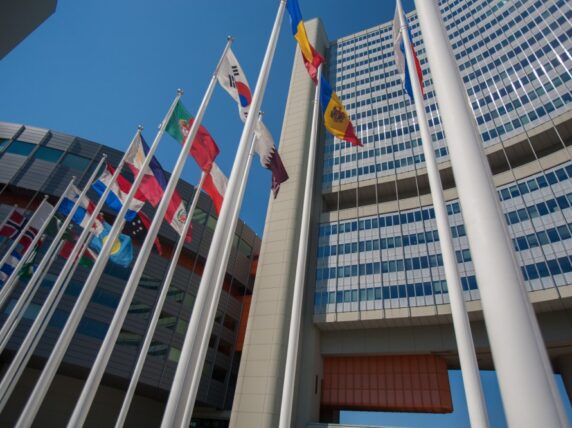How to overcome barriers to INGO structural innovation
Eastside Primetimers’ fourth Good Merger Index [PDF], released last month, shows UK NGOs’ continuing reluctance to make bold changes to their organisational structures.
Only 70 not-for-profit mergers took place in 2016/17, a tiny number compared to the 167,000 charities registered in the UK. The Index provides excellent analysis of the largest 20 deals and the sectors with notable merger activity. However, INGOs are conspicuously absent from both lists.
As outlined in our previous blog, INGOs are under pressure to re-evaluate their business models in the face of significant disruption in the sector. Why, then, is there so little INGO activity?
Common barriers to successful mergers
In recent years, successful structural innovations have included: mergers between Save the Children and Merlin and between Send a Cow and Emerge Poverty Free; the formation of United Purpose; and the creation of Humentum from Mango, InsideNGO and LINGOs. But there have also been plenty of failed attempts, such as the collapsed merger of Goal and Oxfam Ireland.
The Good Merger Index sets out eight common barriers to mergers: institutional inertia, trustees’ focus on organisational sustainability, mergers’ relative low prioritisation, poor communication of mergers’ benefits, difficulty in finding partners, financial costs, pension liabilities and logistical complexities.
Subscribe to our newsletter
Our weekly email newsletter, Network News, is an indispensable weekly digest of the latest updates on funding, jobs, resources, news and learning opportunities in the international development sector.
Get Network NewsMergers are just one example of how INGOs can reinvent themselves through refreshing their organisational structure, but the barriers to them illustrate the difficulty of pursuing structural innovation more broadly. All eight barriers listed by The Index apply to INGOs, and on top of these, working internationally introduces significant organisational, logistical and cultural complexity into any proposed restructuring.
3 measures to encourage structural change
The Index suggests practical steps that could help not-for-profits to overcome the barriers to structural innovation. Taking into consideration the specificities of INGOs, we suggest the following three additional measures that would encourage bold structural changes in the sector.
1. Support for change from funders
Institutional funding is a mainstay of most INGOs. If funders were to signal their support for structural innovation, it could have a powerful effect in changing trustees’ and executives’ attitudes and willingness to try new solutions.
DFID’s UK Aid Connect is a step in the right direction, although the announcements about grantees have been much delayed. Launched last year, it encourages innovative partnerships between NGOs, think tanks and public, private and third sector organisations by providing funding for international development consortia. DFID acknowledges that no single organisation has the solution to the complex and interconnected challenges of development and there is much to gain from the sharing of ideas and resources.
We would like to see DFID and other funders being even more ambitious. There is potential for them to support and incentivise not just project partnerships but deeper forms of collaboration.
2. Establishment of a structural innovation fund
The logistical costs of undertaking structural innovation can be prohibitively high. To tackle this, Eastside Primetimers and its partners are developing a Merger Turnaround Fund which will offer grant funding for organisations exploring mergers, followed by loan financing for implementation and growth stages.
A sector-specific equivalent could help INGOs overcome financial hurdles that are exacerbated by having operations in different countries. Such a fund could, for example, be established by a progressive not-for-profit foundation.
Rather than only targeting struggling organisations, we would like to see funding that frames mergers and radical re-organisation as positive, strategic steps that can drive more effective outcomes, rather than responses to financial difficulty. We think that a relatively small investment in a fund could have a disproportionately large impact.
3. Thinking beyond mergers
The Good Mergers Index gives a timely reminder of the benefits of mergers, but it is important to remember that these are only one of many types of structural innovation. It falls on trustees and executives to constantly question and think creatively about whether their organisation has the right business model. While many appear to be thinking about internal restructuring we are seeing few of the bold moves and fundamental changes that could benefit not-for-profits most, particularly amongst INGOs.
Barriers to organisational restructuring can be prohibitive, especially for INGOs. While innovation must ultimately come from trustees and executives, there are also steps that policymakers and funders can take to promote a cultural shift. Many would welcome the new lease of life in the INGO sector that structural innovations could bring.
Category
News & viewsThemes
Futures and innovation



